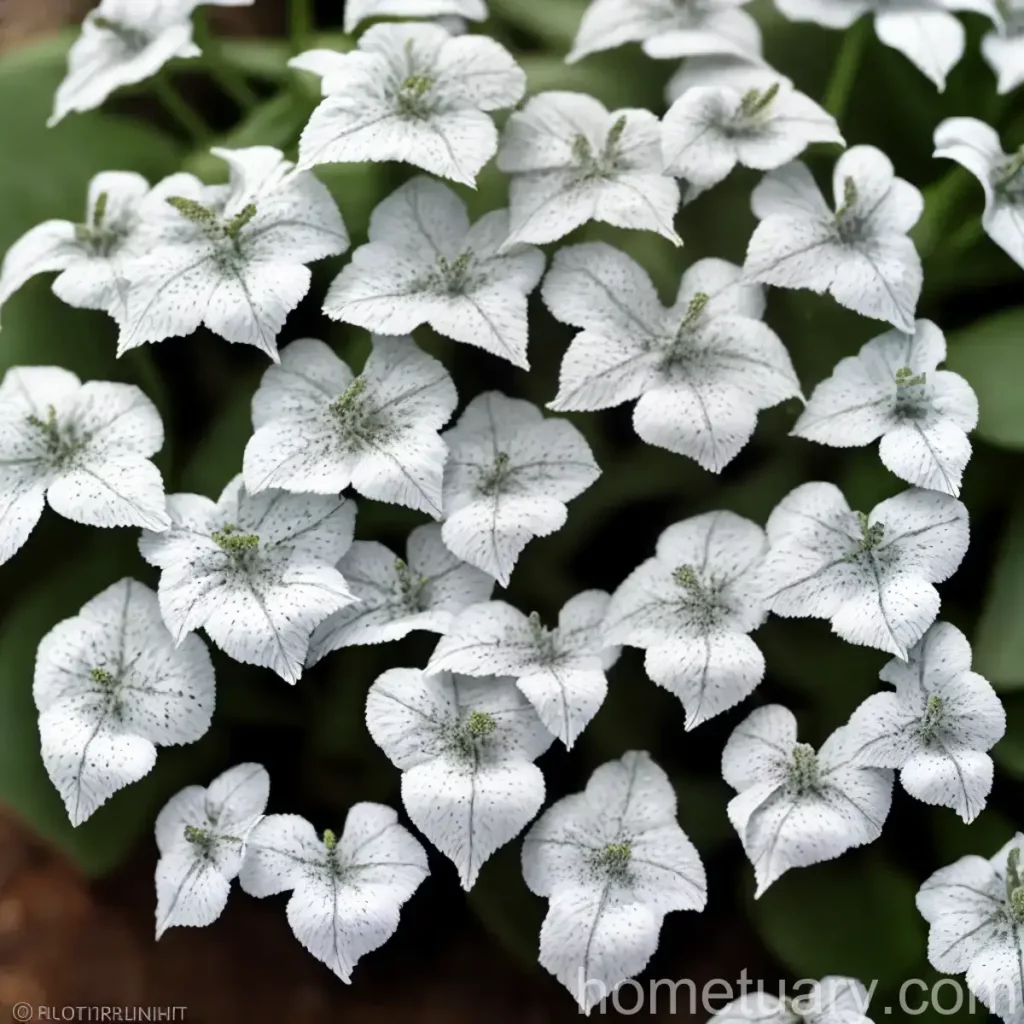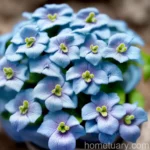The Fascinating World of Lungwort (Pulmonaria officinalis ‘White Wings’)
As a plant scientist, I am thrilled to delve into the captivating realm of Pulmonaria officinalis ‘White Wings’ or more commonly known as Lungwort. This perennial herbaceous plant is a member of the Boraginaceae family and is renowned for its captivating white flowers and numerous cultural, medicinal, and ornamental uses. In this comprehensive guide, we will explore the intricacies of Lungwort, its cultivation, uses, and intriguing facts, giving you an insight into the captivating world of this remarkable plant.
What is Lungwort (Pulmonaria officinalis ‘White Wings’)?
Lungwort, scientifically known as Pulmonaria officinalis ‘White Wings’, is a charming herbaceous perennial that is indigenous to Europe and Western Asia. It is a member of the Boraginaceae family, which also includes plants like forget-me-nots and borage. This distinct plant is identified by its captivating white flowers and intricately patterned leaves, making it a beloved addition to any garden or landscape.
Key Takeaways – Lungwort (Pulmonaria officinalis ‘White Wings’)
Before delving into the details of Lungwort, let’s highlight some key takeaways pertaining to this fascinating plant. These key takeaways will give you a concise overview of the various aspects of Lungwort, including its cultural requirements, uses, and maintenance.
- Scientific Name: Pulmonaria officinalis ‘White Wings’
- Common Names: Lungwort, White Wings lungwort
- Plant Type: Herbaceous perennial
- Flower Color: White
- Cultural Requirements: Well-draining soil, partial shade, regular watering
- Uses: Medicinal, ornamental, companion plant
- Maintenance: Low maintenance, periodic pruning, division
- Special Characteristics: Attracts pollinators, deer resistant
- Popularity: Increasingly popular for shade gardens and woodland landscapes
Now that we have an initial understanding of the remarkable Lungwort, let’s explore its cultivation, uses, and maintenance in more detail.
Culture
Cultivating Lungwort, just like any other plant, requires a good understanding of its specific cultural requirements. By catering to these needs, you can ensure the optimal growth and development of this captivating perennial.
Water
Lungwort thrives in consistently moist soil, particularly during the active growing season. It is essential to maintain moderately moist conditions, as overly dry or waterlogged soil can adversely affect the plant’s health. Additionally, adequate watering is crucial during periods of drought to sustain the plant’s vigor and vitality.
Sunlight
This hardy perennial is best suited for partial shade or dappled sunlight. While it can tolerate some morning sun, providing it with protection from the intense afternoon sun is crucial for its well-being. Lungwort is often favored for shaded gardens, woodland landscapes, and areas with filtered light, where it can flaunt its delicate blooms and intricate foliage.
Fertilizer
Fertilization requirements for Lungwort are relatively modest. A balanced, organic fertilizer applied in spring as new growth emerges can provide the necessary nutrients for robust development. It is imperative not to over-fertilize, as excessive nutrients can lead to lush foliage at the expense of flowering.
Soil
Lungwort thrives in well-draining, humus-rich soil with a slightly acidic to neutral pH. Amending the soil with organic matter, such as compost or leaf mold, can enhance its fertility and structure, creating an ideal growing medium for this exquisite perennial.
Pruning
Pruning plays a pivotal role in maintaining the health and aesthetics of Lungwort. Periodic removal of spent flowers, damaged foliage, and occasional rejuvenation pruning can promote vigorous growth and abundant flowering. Additionally, dividing mature clumps every few years can rejuvenate the plant, prevent overcrowding, and rejuvenate its vigor.
Uses
Medicinal Uses
Lungwort has a rich history of medicinal use, with its leaves being traditionally utilized for their purported respiratory and pulmonary benefits. Due to its high tannin content, it was historically used as an astringent and in traditional herbal preparations. However, it is essential to consult a qualified healthcare professional before using any plant-based remedies for medicinal purposes.
Ornamental Uses
In addition to its medicinal significance, Lungwort is highly esteemed for its ornamental value. Its captivating white flowers, often accompanied by unique silver-spotted or mottled foliage, make it a sought-after addition to shaded gardens, woodland edges, and naturalistic landscapes. It serves as an excellent companion plant for other shade-loving perennials, such as hostas, ferns, and woodland bulbs.
Companion Plant
Lungwort’s enchanting blooms and intricate leaves make it an ideal companion plant for a variety of shade-loving perennials and woodland specimens. The contrast between its white flowers and intricately patterned foliage can create a striking visual impact when paired with plants of differing textures and forms.
Propagation
Propagating Lungwort can be accomplished through various methods, including division, seed sowing, and stem cuttings. Each propagation technique offers its unique set of advantages and challenges, allowing for flexibility in propagating this beloved perennial.
Division
Dividing mature Lungwort clumps every few years not only rejuvenates the plant but also provides an opportunity to multiply its presence in the garden. Divisions are best performed in early spring or after flowering in summer, ensuring that each division possesses sufficient roots and shoots for successful establishment.
Seed Sowing
Lungwort can be propagated from seeds, though it is important to note that it may not come true to the parent plant due to the potential for cross-pollination. Sowing fresh seeds in a suitable seed-starting mix and providing the necessary conditions for germination can potentially yield new Lungwort plants over time.
Stem Cuttings
Utilizing stem cuttings to propagate Lungwort can be an effective method for generating identical clones of the parent plant. Selecting healthy, non-flowering stems and providing them with optimal rooting conditions can result in the successful establishment of new plants from cuttings.
Container Popularity
The allure of Lungwort extends beyond traditional garden settings, as it has gained popularity as a container plant for shaded patios, balconies, and urban spaces. Its adaptability to container culture and ability to thrive in partial shade make it an appealing choice for container gardening enthusiasts seeking to embellish their outdoor living areas with captivating foliage and delicate white flowers.
Container Common Diseases
When grown in containers, Lungwort may be susceptible to certain diseases and issues that are characteristic of containerized plants. It is essential to monitor the plant for signs of stress, disease, or pest infestations, and take prompt remedial action to ensure its health and vitality.
Disease Diagnosis
Common diseases that may affect Lungwort grown in containers include powdery mildew, leaf spot, and root rot. Regular inspection of the plant for symptoms such as unusual spots, discoloration, or wilting can aid in early disease diagnosis and implementation of appropriate control measures.
Common Pests
While Lungwort is generally resistant to pests, certain common garden pests, such as aphids and slugs, may occasionally pose a threat, particularly when the plant is grown in containers. Vigilant monitoring and proactive pest management can help mitigate potential pest-related issues and safeguard the plant’s well-being.
Botanist’s Tips
As a plant scientist deeply passionate about the captivating realm of botanical wonders, I’d like to share a few insightful tips for cultivating and savoring the beauty of Lungwort in garden settings. These botanist’s tips are intended to enhance your experience with this remarkable herbaceous perennial.
-
Naturalizing in Woodland Settings: Lungwort has a propensity for naturalizing in suitable woodland settings, where it can form expansive colonies under favorable conditions. Consider incorporating it into shaded woodland areas with moist, humus-rich soil to appreciate its naturalizing tendencies.
-
Pollinator Attractor: Lungwort’s nectar-rich flowers are known to attract an array of pollinators, including bees and butterflies, making it a valuable addition to pollinator-friendly gardens and landscapes. Observing the bustling activity of pollinators as they forage on Lungwort’s blossoms adds another dimension of enchantment to the garden.
-
Companion Planting: When selecting companion plants for Lungwort, consider incorporating complementary shade-loving species that harmonize with its growth habits and aesthetic qualities. The interplay of varied foliage textures and bloom times can create visually compelling compositions in shaded garden spaces.
Fun Facts
To delve deeper into the enchanting world of Lungwort, let’s uncover some intriguing and delightful fun facts about this captivating perennial.
-
Folklore and Symbolism: Lungwort has a rich history of folklore and symbolism, with its spotted leaves purportedly resembling diseased lungs, leading to its traditional use in treating pulmonary ailments. In folklore, it was associated with protection and was believed to ward off evil spirits.
-
Historical Uses: Throughout history, Lungwort has been valued for its purported medicinal properties and was historically used in herbal remedies for respiratory ailments. Its presence in traditional herbal medicine attests to its enduring significance in the realm of herbal lore.
-
Culinary Uses: While its culinary uses are not as prevalent as its medicinal and ornamental value, the tender young leaves of Lungwort have been used in culinary preparations, lending a mild, earthy flavor to salads and other dishes in select culinary traditions.
Links to External Resources
For further exploration and in-depth information on Lungwort, here are some credible external resources that provide valuable insights into the cultivation, uses, and lore surrounding this captivating plant:
- The Royal Horticultural Society – Pulmonaria
- Missouri Botanical Garden – Pulmonaria officinalis
- North Carolina Extension Gardener Plant Toolbox – Pulmonaria Officinalis (Common Lungwort)
- University of Maryland Extension – Lungwort (Pulmonaria spp.)
By delving into these reputable resources, you can gain a deeper understanding of Lungwort and its manifold facets, ranging from its botanical characteristics to its diverse cultural and medicinal applications.
In conclusion, Lungwort (Pulmonaria officinalis ‘White Wings’) stands out as a captivating herbaceous perennial with a rich tapestry of cultural, medicinal, and ornamental significance. Its enchanting white flowers, intricate foliage, and versatile uses make it a cherished presence in gardens, woodland landscapes, and traditional herbal lore. By embracing its unique cultural requirements and savoring its ornamental and ecological virtues, enthusiasts can revel in the timeless allure of Lungwort within diverse horticultural contexts. Whether it’s admired for its folklore, cherished for its ornamental charm, or valued for its traditional medicinal uses, Lungwort continues to weave its enduring spell in the tapestry of botanical fascination.
For your reference, kindly utilize the following links:
The Royal Horticultural Society – Pulmonaria
Missouri Botanical Garden – Pulmonaria officinalis
North Carolina Extension Gardener Plant Toolbox – Pulmonaria Officinalis (Common Lungwort)
University of Maryland Extension – Lungwort (Pulmonaria spp.)
Note: The provided links are for reference purposes only and are not meant for citation in scientific or academic work.















